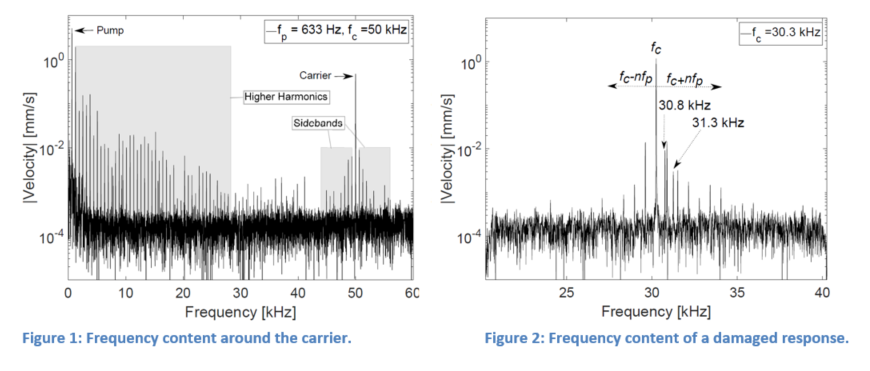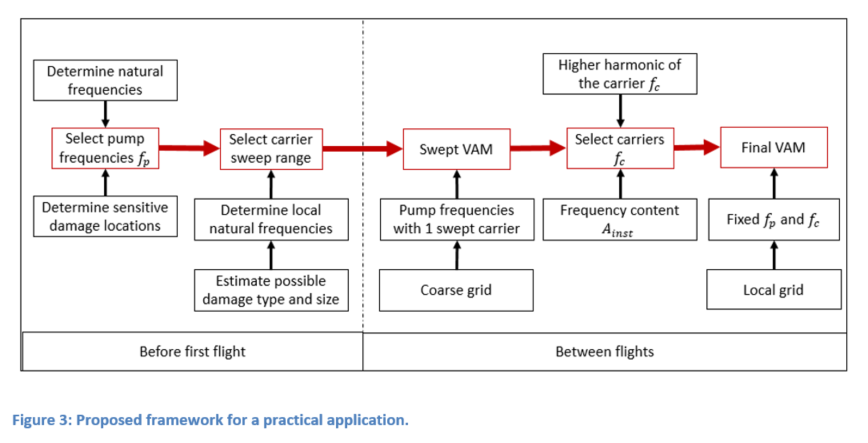Martijn Venterink - University of Twente (October 2015 - January 2017)
Complete version
SUMMARY
Composite materials are more and more applied to aerospace structures. The identification of damage is needed to ensure the integrity of these structures. The Vibro-acoustic Modulation (VAM-)method is a promising non-destructive testing (NDT) technique to localize and characterize damage. The selection of the excitation frequencies (pump and carrier) must however be optimized for a more efficient damage identification on a composite structure. This can be done by obtaining more signal (amplitude) modulations in the damaged area. When the frequency content is investigated of a modulated response in a damaged location, higher harmonics and sidebands can be identified, see Figure 1.

This research has shown that the pump frequency should be chosen equal to a global natural frequency of the structure and the carrier frequency equal to a local natural frequency of the damage (delamination). Unexpected sidebands are present in the narrow band around the carrier frequency in the frequency domain, see Figure 2. Also for specific carrier frequencies a second higher harmonic of the carrier is present in the frequency content of the response signal. These frequencies are used for a proposed framework that can be applied on a practical application, such that the natural frequencies of a structure do not have to be determined every time a VAM-experiment has to be executed, see Figure 3.
KEY RESULTS
- A proposed framework for a practical application of VAM has been proposed, see Figure 3.
- The local dynamic behavior of the delamination is separated from the global dynamics behavior of the structure.
- A pump frequency equal to a natural frequency that causes opening and closing of the delamination resulted in the highest signal modulations, see figure 1.
- A carrier frequency equal to a local natural frequency of the delamination resulted in the most amplitude modulation and extra frequency components that can be used for the carrier frequency selection in the proposed practical application.
